Biobloc Appliances
For correction of severe arch constriction and overjets
The Biobloc (Stage 1, 2 and 3) appliances are useful alternative arch development methods in MRC's treatment systems. The appliances are used sparingly as they cannot be combined with MRC's appliances to improve function and, when used, it is mainly the Biobloc Stage 1 (BB1) or, very rarely, the Stage 3 (BB3). The BB1 is useful for severe arch restrictions (especially transverse) when the BWS cannot be used. It is reserved mainly for use in the primary or early mixed dentition, as well as approximating the central incisors. The Biobloc is proficient in quick expansion of the arches in all three dimensions but is very technique sensitive and tends to worsen patients' function. The BB3 is used for patients with a severe overjet who cannot retain their Myobrace® appliance. This page will focus on the BB1 appliance, since the others are not commonly used in Myobrace® treatment. For more information on the Biobloc appliances, please complete our advanced online courses.
Design Features
The design features of the Biobloc Stage 1 (BB1) are ideally suited to provide efficient expansion of the upper arch, especially transverse expansion, while allowing for approximation of the incisors.
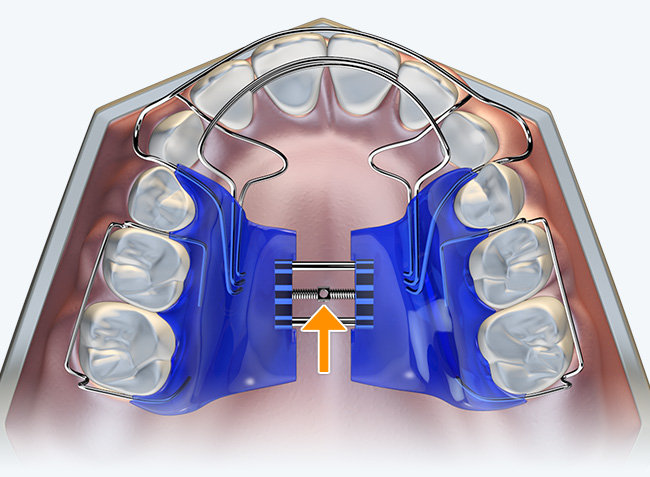
Expansion screw
allows for semi-rapid expansion, which is less traumatic on the midpalatal suture than rapid expansion.
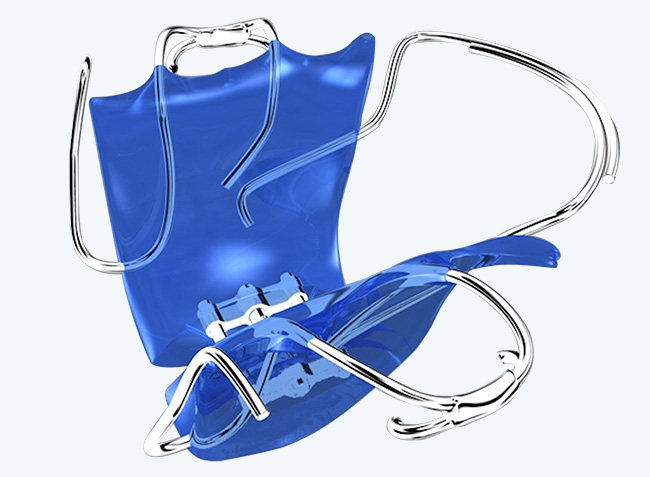
Removable appliance
encourages better oral hygiene and patient acceptance.
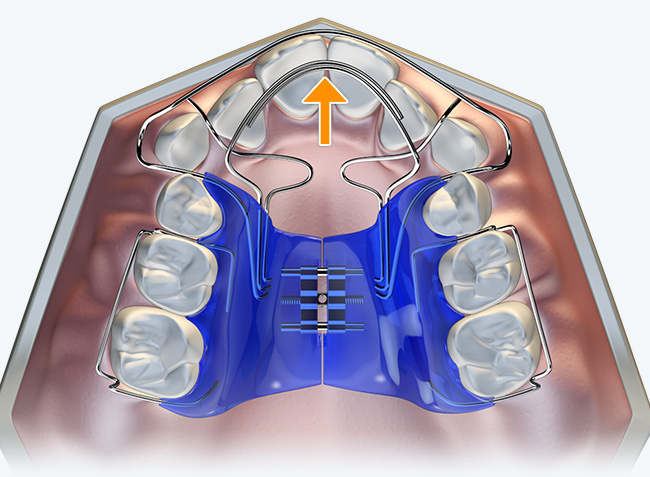
Catenary wires
allow for simultaneous anterior arch development.
Directions for Use
The Biobloc Stage 1 (BB1) interferes with patient function, thus it is recommended that the patient remove their Biobloc and wear their Myobrace® for one hour while awake, then immediately placing the Biobloc back into their mouth. The patient is instructed to turn the expansion screw one quarter of a full turn, every 24 hours, until sufficient arch development is achieved. The patient is seen every two to four weeks and, in that time, the practitioner adjusts the appliance while ensuring the appliance is being turned correctly. The Biobloc should not be used for any more than four to six months.
Instructions for adjustment:
Step 1
Remove the Biobloc from the patient's mouth, paying attention to the retention of the appliance and the patient's oral hygiene.
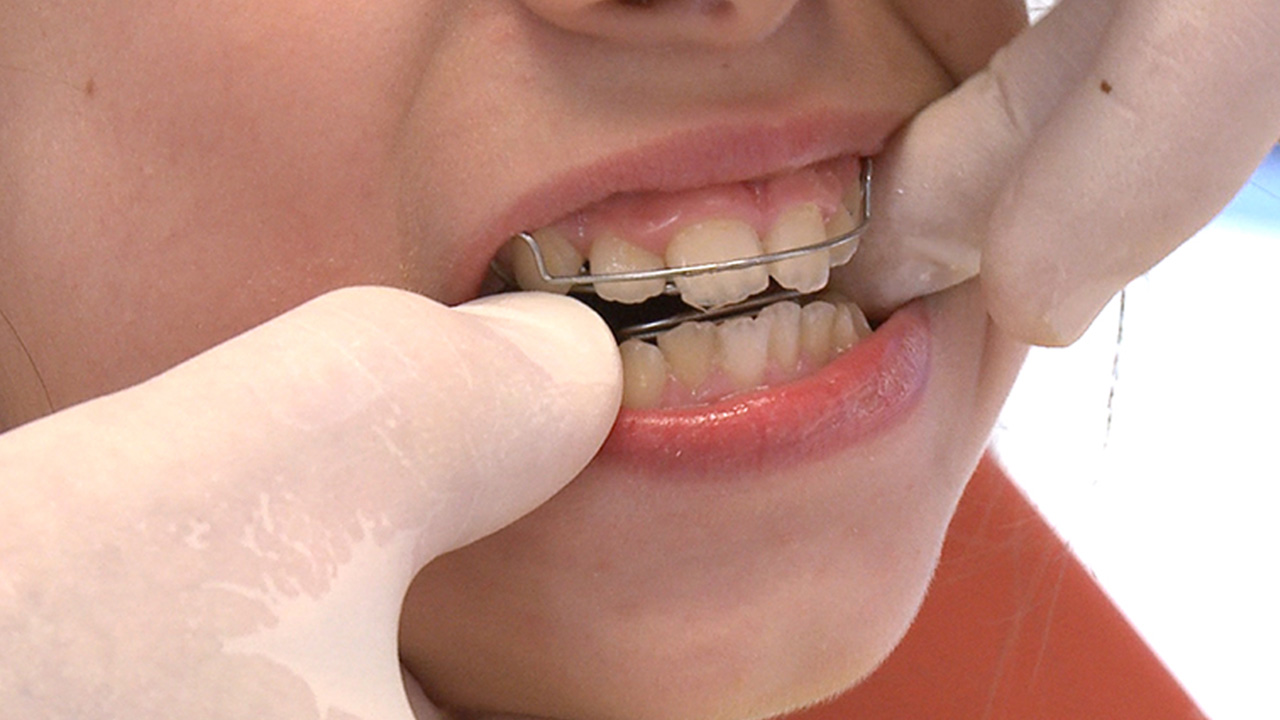
Step 2
Advance the labial bow 1-2mm in the anterior direction.
Step 3
Adjust the catenary wires by 1-2mm in the anterior direction.
Step 4
Adjust the retention clasps and replace the Biobloc in the patient's mouth, ensuring that it is tightly retained and stable. Also ensure that the patient can remove and replace it.
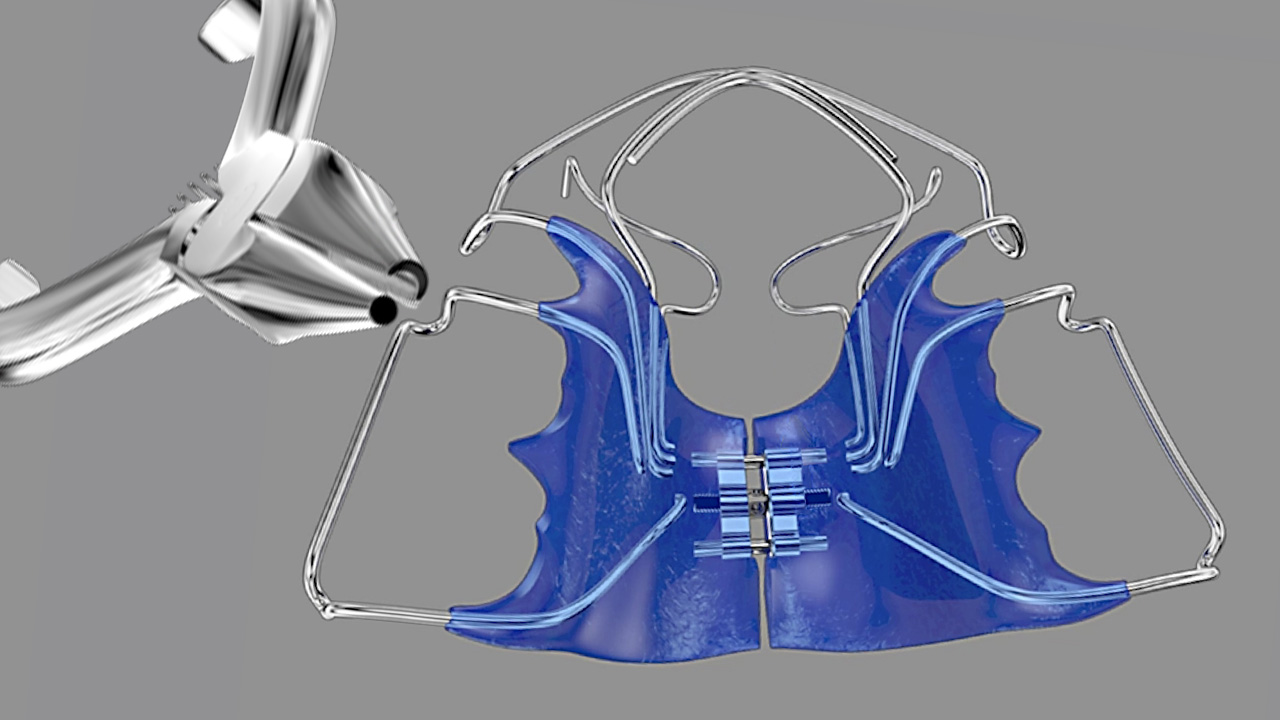
Step 5
Instruct the patient to turn the expansion screw 1/4 of a full turn every 24 hours. The patient should remove the Biobloc and wear their second stage Myobrace® appliance for one hour every day (before returning the Biobloc). Recall the patient again in two to four weeks.
Important Notice
The Biobloc requires further training in order to become competent in its use. For more information on the Biobloc, please complete our advanced online courses.
Incorrect usage of the appliance can result in adverse side effects.
Case Studies
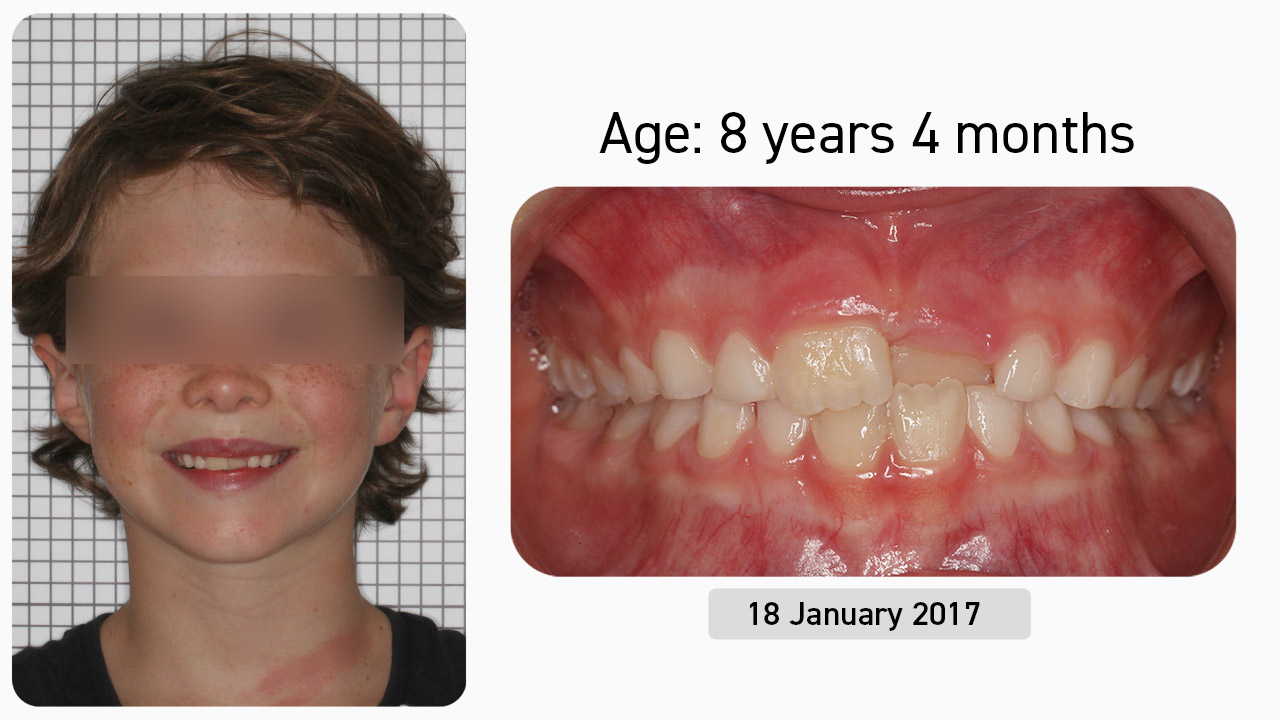
Case Study 1
This eight-year-old male patient presented with the chief complaint of single-tooth crossbite and wanted early intervention. After being presented with the various treatment options, the decision was made to undertake Myobrace® treatment. This involved the use of a series of Myobrace® appliances combined with the Biobloc Stage 1 (BB1) appliance, the BWS arch expansion appliance and Myobrace® Activities.
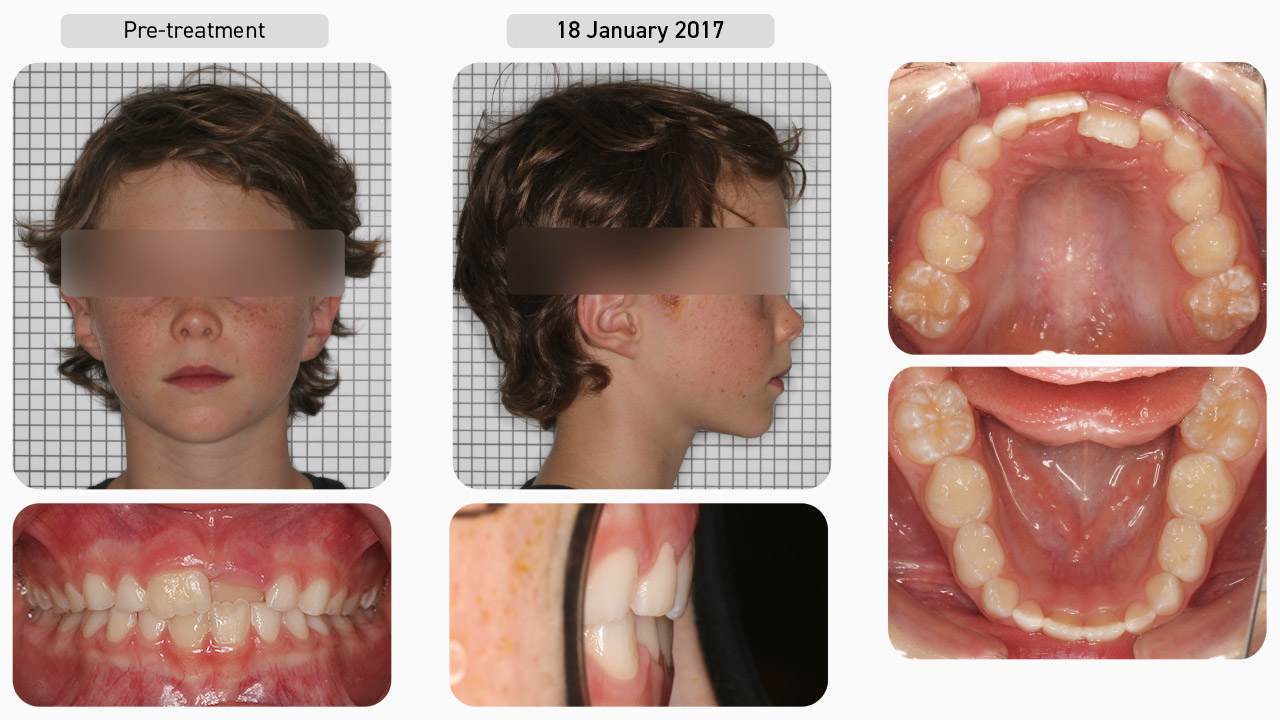
Pre-treatment
Conducting a Myofunctional Orthodontic Evaluation (MOE), we concluded that this patient had an anterior crossbite involving the left-hand side central incisors. The upper and lower jaws were slightly retruded, while the arch forms were narrow and flattened. It was also noted that there was inadequate spacing between the deciduous teeth to accommodate the developing permanent dentition. His poor myofunctional habits included mouth breathing with a low tongue posture and reverse swallow. Since this patient was in the mixed dentition, he was best suited to the Myobrace® for Kids series.
Dental Progression
His treatment began with the K1 appliance to establish nasal breathing and begin the correction of myofunctional habits. Once his breathing function had improved and he was consistently retaining the K1 overnight, the decision was made to use the Biobloc Stage 1 (BB1) appliance to expand the upper arch and create room to accommodate the tongue, as well as help to correct the anterior crossbite. During BB1 expansion, the patient continued to wear the K1 appliance for one hour daily and also continued to work through the Myobrace® Activities program.
Dental Progression
Once upper arch expansion was complete, the BB1 was removed and the patient was issued the K2 appliance to continue arch development and habit correction. A few months later, the decision was made to enter a second round of expansion as the upper arch was still slightly underdeveloped and the upper right lateral incisor had erupted in a rotated position. This time, the BWS was used and, as it must be combined with a first stage appliance, the patient was reissued the K1 during this expansion phase.
Dental Progression
Following the second round of arch expansion, the wire was removed and the patient was reissued the K2 appliance. The patient was then issued the T2 appliance for further arch development, as the T series appliances have a stronger anterior section that the K series. Once the arches were nicely developed and his habits largely corrected, the patient was moved on to the T4 appliance for retention.
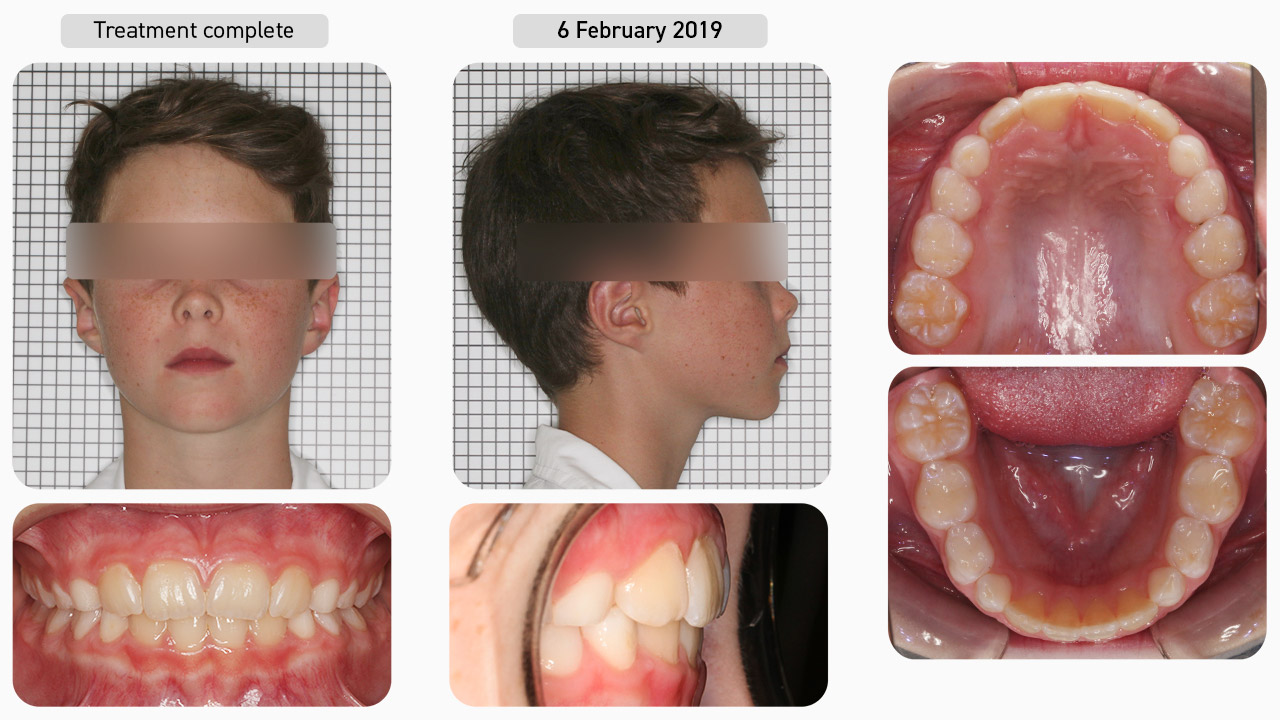
Treatment Complete
Once the goals of Myobrace® treatment had been achieved (correction of breathing and myofunctional habits, arch form and dental alignment), the patient was then entered into the retention phase. This involved continued use of T4 appliance to retain the arch form, alignment and habits, so that his teeth and jaws can continue to develop correctly.
Facial Progression
Once breathing and myofunctional disorders have been corrected, the development of the face can continue in the correct forward and downward direction. This patient's midface and lower face have both developed forwards, which has had positive effects on his breathing patterns and improved facial profile.
Treatment Summary
Using the Myobrace® appliances in conjunction with the BB1 and BWS arch expansion appliances, we have helped this patient to establish nasal breathing, correct his myofunctional habits, and improve the alignment of his teeth. The anterior crossbite has been corrected, the arches are broad and round, and the anterior dental crowding has also been resolved. With the correct breathing and muscle habits established, we can expect further improvements in the teeth and jaws as the patient continues to grow and more permanent teeth erupt into the now well-developed arches.
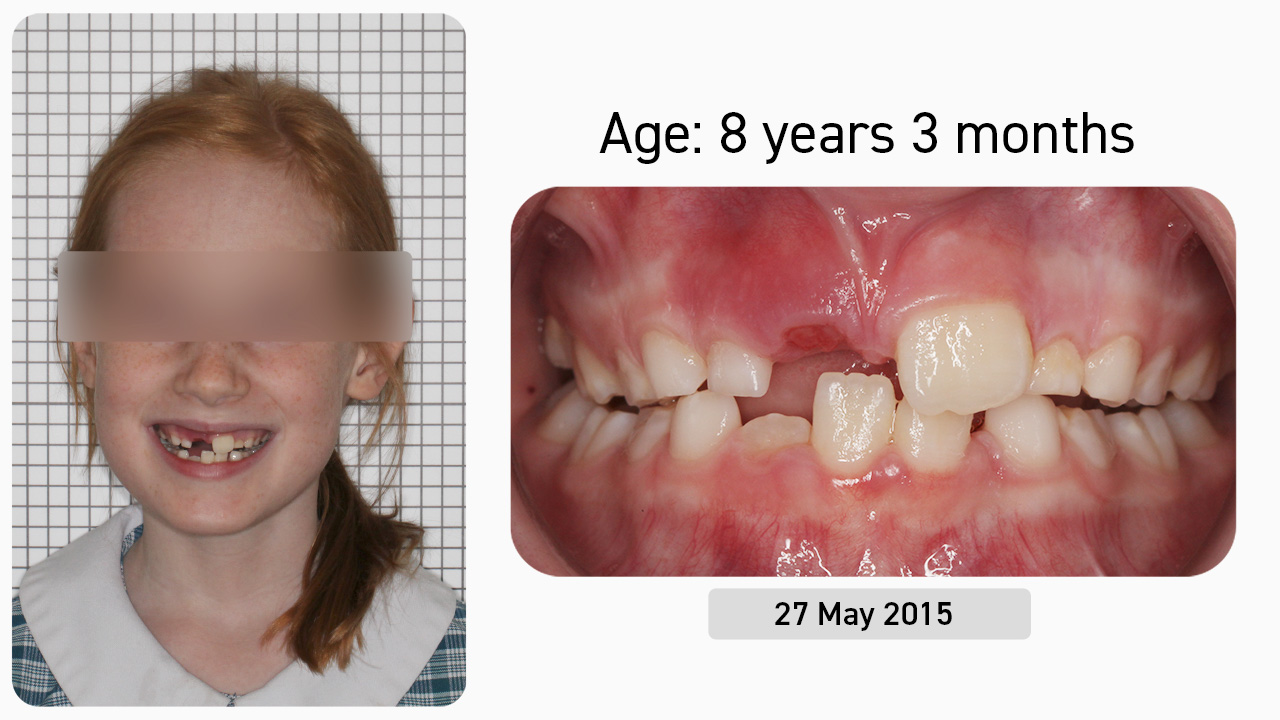
Case Study 2
This eight-year-old female patient presented with the chief complaint of crowding and wanting early treatment in an effort to avoid braces and extractions. After being presented with the various treatment options, the decision was made to undertake Myobrace® treatment. This involved the use of a series of Myobrace® appliances combined with the Biobloc Stage 1 (BB1) appliance and the Myobrace® Activities.
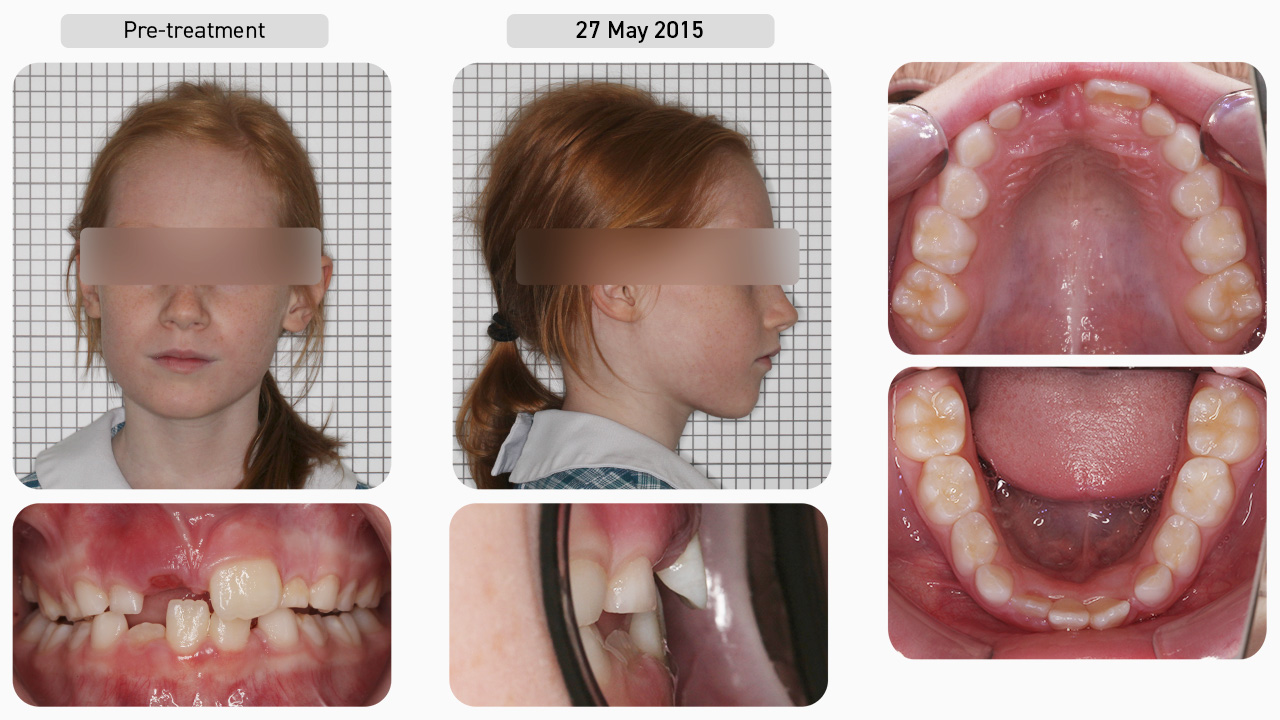
Pre-treatment
Using the Myofunctional Orthodontic Evaluation (MOE) form, we documented that this patient was a vertical grower with a retruded maxilla and backward rotated mandible. She had a deep bite, narrow and flattened arches, tipped in posterior teeth, and there was lost space for the lower left lateral incisor. This patient was a snorer and bruxer, and her poor myofunctional habits included mouth breathing with a low tongue posture and reverse swallow. Since she was in the mixed dentition, her treatment began with the Myobrace® for Kids series.
Dental Progression
She started with the K1 appliance to establish nasal breathing and begin the correction of myofunctional habits. Once her breathing function had improved and she was consistently retaining the K1 overnight, she progressed onto the K2 appliance to focus on arch development and continued habit correction. Look at how the space for the lower left lateral incisor has opened up without the use of any fixed appliances in the lower arch. The decision was then made to use the Biobloc Stage 1 (BB1) appliance to develop the upper arch, while at the same time, approximate the central incisors to close the midline diastema and open up space for the lateral incisors. During BB1 expansion, the patient continued to wear the K2 appliance for one hour daily. Once upper arch expansion was complete, the BB1 was removed and the patient continued on the K2 appliance.
Dental Progression
A few months later, the decision was made to enter a second round of expansion as more forward maxillary development was needed. This time, the BWS appliance was used, and the patient was reissued the K1 appliance for use during this expansion phase. Once complete, the wire was removed and the patient was issued the T3 appliance for final alignment.
Dental Progression
The T3 was used for approximately four months, after which time the patient was issued the T4 appliance for retention. Again, note how space for the lower left lateral incisor was created without the need for any fixed appliances in the lower arch as a result of correcting growth.
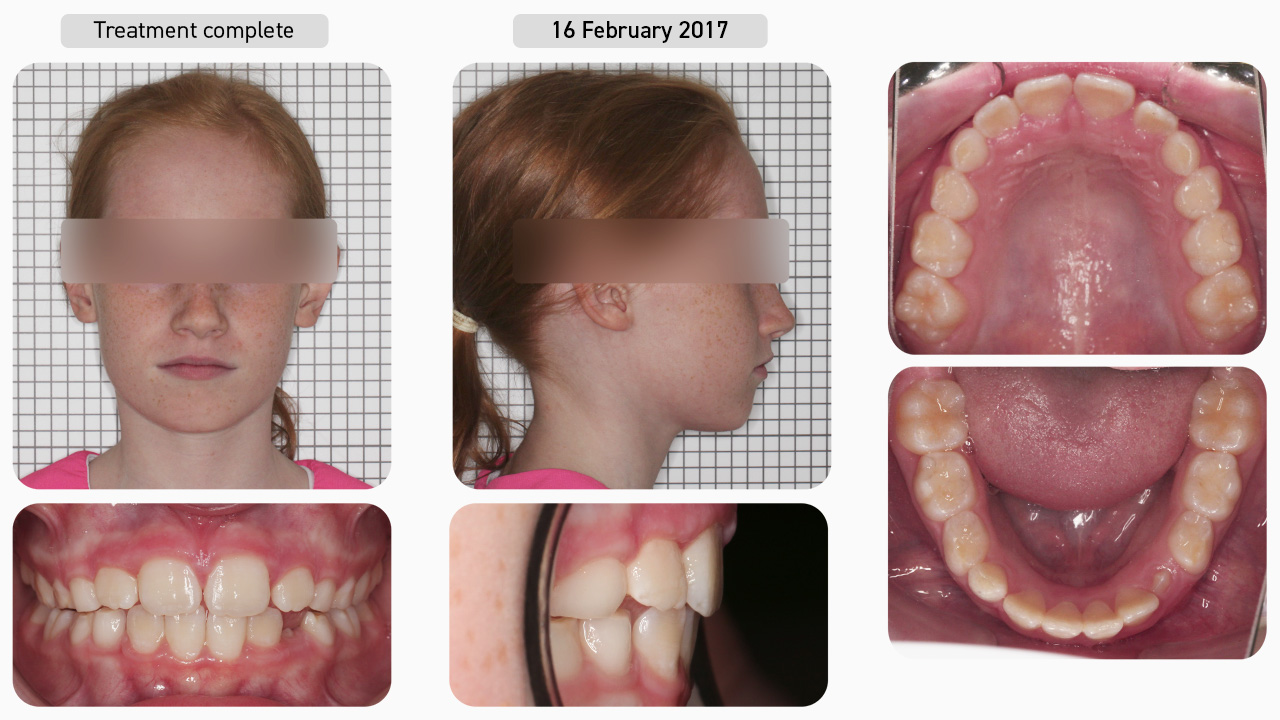
Treatment Complete
Once the goals of Myobrace® treatment had been achieved, correction of breathing and myofunctional habits, arch form and dental alignment, the patient was entered into the retention phase. This involved continued use of the T4 appliance to retain the arch form, alignment and habits, so that her teeth and jaws could continue to develop in the correct manner.
Facial Progression
Once breathing and myofunctional disorders have been corrected, the development of the face significantly improves. The direction of growth for this patient changed from vertical to more horizontal, and both the midface and lower face have developed forwards, having positive effects on the airway. With good breathing and muscle function established, we expect the patient’s remaining development to continue favourably.
Treatment Summary
Using the Myobrace® appliances, in conjunction the BB1, BWS and the Myobrace® Activities, we have helped this patient to establish nasal breathing, correct her myofunctional habits and, therefore, achieve natural alignment of the teeth. The arches are broad and round, the posterior teeth have uprighted, and the dental crowding has resolved. Most importantly, the patient is no longer snoring or grinding. With the correct breathing and muscle habits established, we can expect further improvements in the teeth and jaws as the patient continues to grow and more permanent teeth erupt into the now well-developed arches.
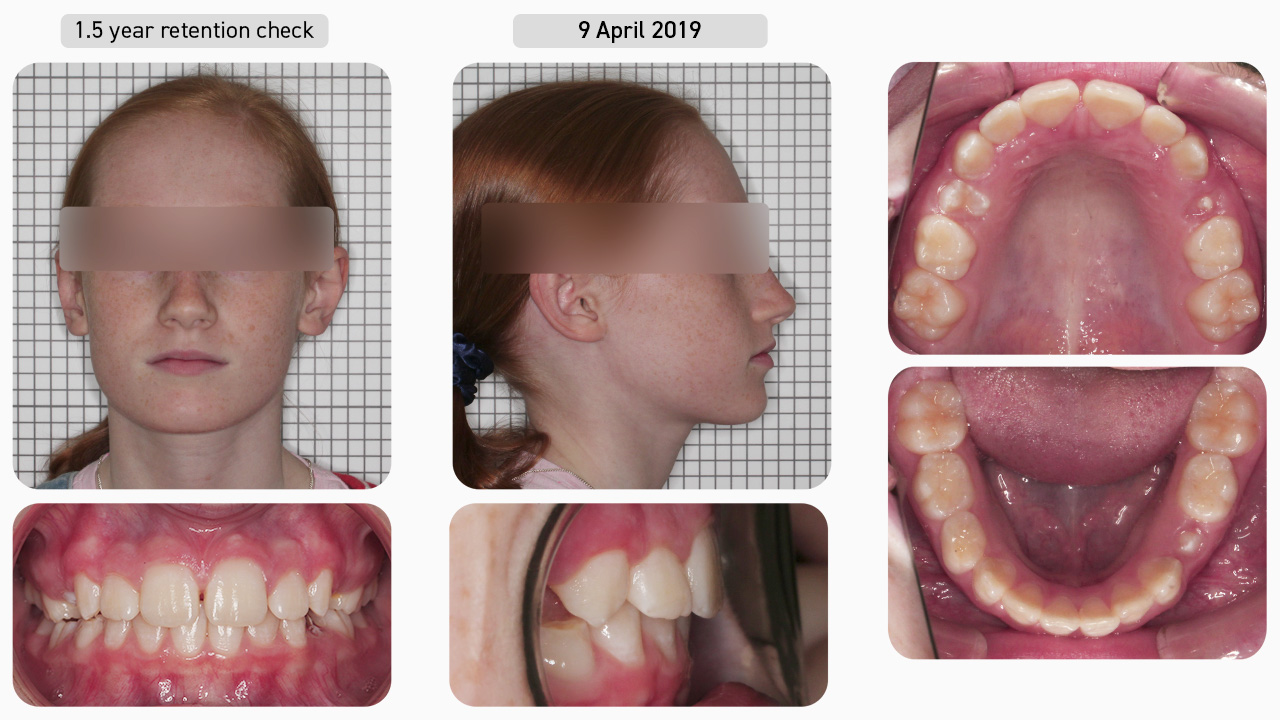
Retention
The patient returned for a retention check approximately one and a half years after treatment was complete and, as you can see, the result has been maintained without the use of any fixed retainers and her growth has continued in a favourable direction. With the correct breathing and muscle habits maintained, we expect good stability of the result ahead.
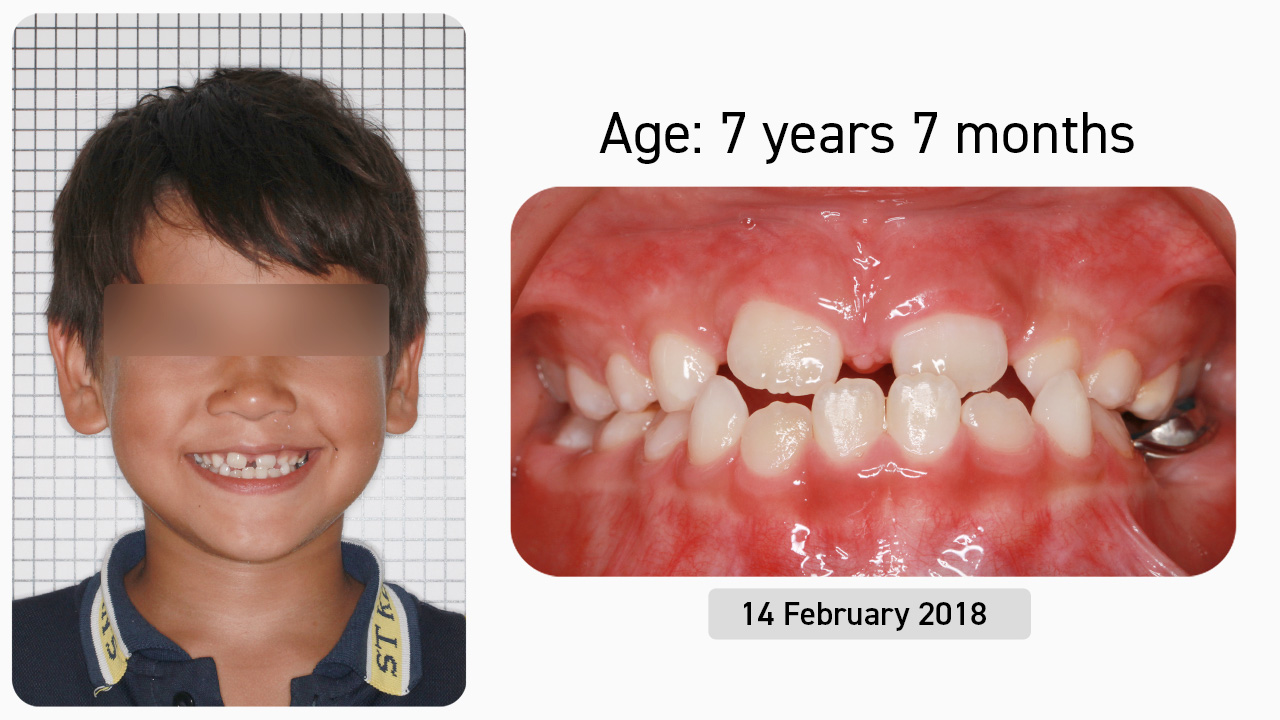
Case Study 3
This seven-year-old male patient presented with the chief complaint of an underbite and wanting to avoid braces. After being presented with the various treatment options, the decision was made to undertake Myobrace® treatment. This involved the use of a series of Myobrace® appliances combined with Myolay™, the Biobloc Stage 1 (BB1) appliance and the Myobrace® Activities.
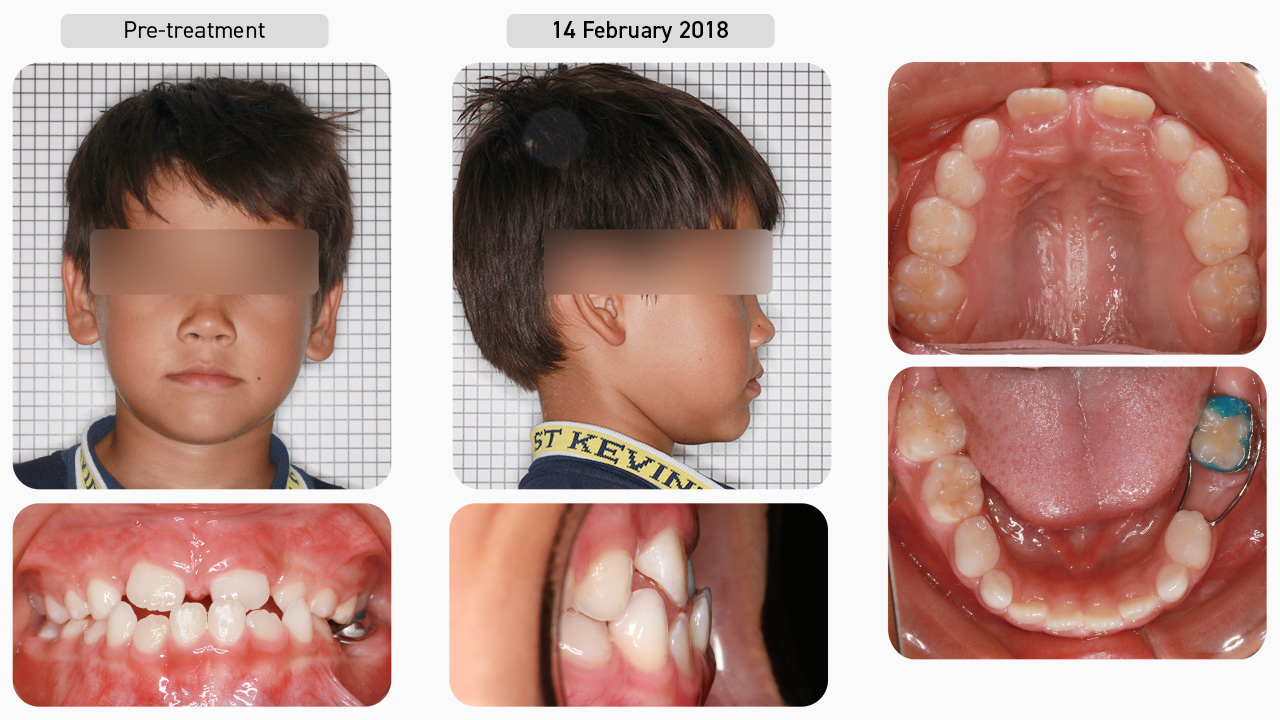
Pre-treatment
Performing a Myofunctional Orthodontic Evaluation (MOE), we documented that this patient had a Class III malocclusion with narrow and flattened arches and moderate to severe dental crowding. His poor myofunctional habits included mouth breathing with a low tongue posture and reverse swallow. Since he was in the mixed dentition with a Class III malocclusion, his treatment began with the Interceptive Class III series.
Dental Progression
He started with the i-3N appliance to establish nasal breathing and begin the correction of myofunctional habits. Six weeks later, his breathing function had improved and he was consistently retaining the i-3N overnight, so he progressed on to the i-3® appliance to focus on arch development and continued habit correction. Myolay™ composite was used to unlock the upper jaw from the lower jaw to further enhance maxillary development. Good compliance with both Myobrace® wear and the Myobrace® Activities saw the upper arch slowly develop forward and, at this point, the anterior teeth were in an edge-to-edge relationship.
Dental Progression
Since the upper arch needed further development to accommodate the tongue and create space for eruption of the lateral incisors, the decision was made to use the Biobloc Stage 1 (BB1) appliance to further expand the upper arch. The BB1 was used to produce both transversal and sagittal expansion, and the central incisors were approximated to close the midline diastema and open up space for the lateral incisors. During BB1 expansion, the patient continued to wear the i-3® appliance for one hour daily. Once upper arch expansion was complete, the BB1 was removed and the patient was issued the P-3® appliance for final alignment and retention.
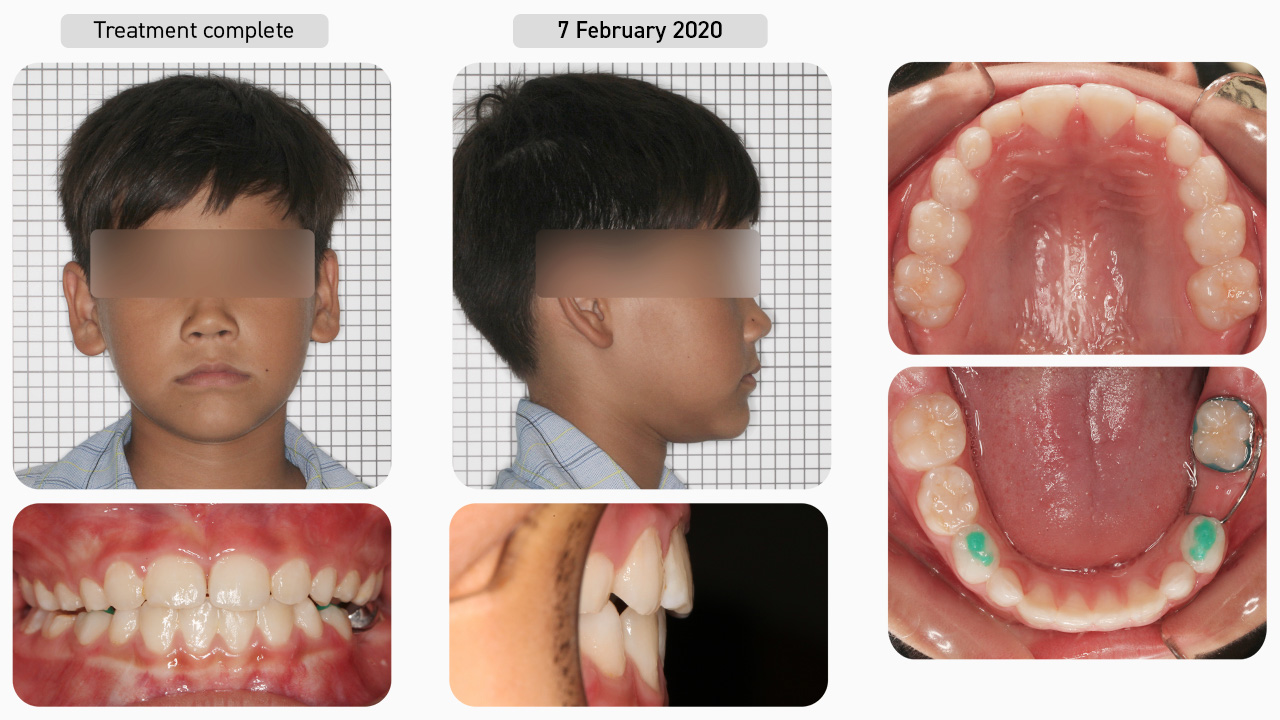
Treatment Complete
With good compliance, the goals of Myobrace® treatment (correction of breathing and myofunctional habits, arch form and dental alignment) were achieved. Following this, the patient entered into the retention phase, continuing on the P-3® appliance to retain the arch forms, alignment and habits, ensuring that he would continue to develop in the correct manner.
Facial Progression
Once breathing and myofunctional disorders have been corrected, the development of the face improves. This patient's midface has developed forwards, improving the oropharyngeal airway. Lip posture has also improved and, with good breathing and muscle function established, we expect the patient’s remaining development to continue in a favourable manner.
Treatment Summary
Using the Myobrace® appliances in conjunction with Myolay™ and the BB1, we have helped this patient to establish nasal breathing, correct his myofunctional habits and, therefore, achieve natural alignment of the teeth. The Class III malocclusion has been corrected, arches are broad and round, and the dental crowding has been resolved. With the correct breathing and muscle habits established, we can expect further improvements in the teeth and jaws as more permanent teeth erupt and the patient continues to grow.
Resources
Appliance Instructions
Downloadable pdf document with instructions specifically for the Biobloc.
Download ResourceMyobrace® Appliance Catalogue
Downloadable pdf document detailing the Myobrace® appliance range.
Download Resource